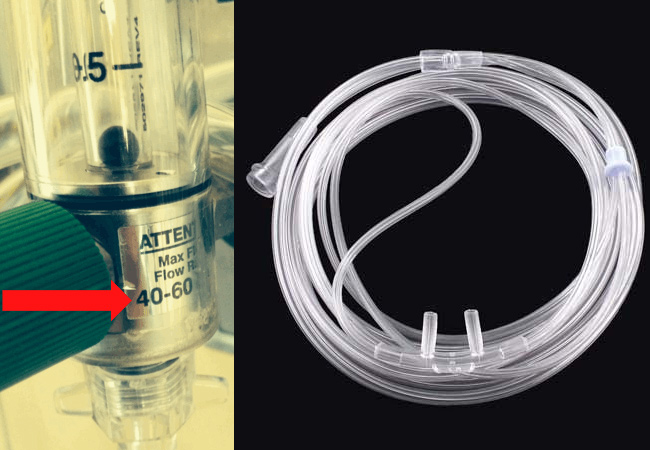
Nasal Cannula for Pre-oxygenation & Apneic Oxygenation: How to do it
In this article, Josh Farkas assistant professor of Pulmonary and Critical Care Medicine at the University of Vermont, tells us about his experience about Preoxygenation and Apneic Oxygenation with the nasal cannula.
Starting Point: We do a bad job at Preoxygenation
We could do better at preoxygenating patients before emergent intubations. In my experience the most commonly used device for preoxygenation is a bag-valve mask, which has many pitfalls. We often accept a poor mask seal in efforts to remain gentle with awake patients.
Many masks don’t provide oxygen unless the operator is squeezing the reservoir in synchrony with the patient’s breaths, which may be difficult to coordinate. Alternatively, PEEP valves can be used to ensure the delivery of oxygen, but this approach requires a good mask seal and is underutilized. The operator is usually distracted with other tasks. The final result is often suboptimal.
Preoxygenation is critical for emergent airway management. It increases safe apnea time before desaturation. Additionally, good preoxygenation is a prerequisite to effective apneic oxygenation (apneic oxygenation depends on a high concentration of oxygen extending from the nasal cannula to the alveoli).
Combining high-quality preoxygenation with apneic oxygenation can really extend safe apnea time and improve first-pass success.
There are better alternatives to bag-mask ventilation but they’re logistically problematic.
There are a lot of effective ways to preoxygenate patients. The challenge is developing a system which is simple enough to function well in an emergency.
When your patient starts vomiting, self-extubates, develops bradycardia, and desaturates to 70% you don’t want to be searching for special equipment or setting up something fancy.
Two of the best approaches are noninvasive ventilation or a non-rebreather mask, but even these systems can be tricky to operate under duress.
Noninvasive ventilation is great for preoxygenation. However, this is logistically difficult to set up in emergent situations. Depending on who the respiratory therapist is, they may attempt to murder you (“You want me to put the patient on BiPap for ten minutes, just so we can take it off when you intubate??”).
Another approach is using a non-rebreather reservoir mask with the flow rate set as high as possible (Weingart & Levitan 2012). This is great technique but it does involve juggling three devices (the reservoir face-mask, a nasal cannula for apneic oxygenation, and a bag-valve mask if needed). If you don’t have three oxygen sources available, it can get tricky ensuring that each device is connected to oxygen at the appropriate time.
Nasal Cannula for Preoxygenation & Apneic Oxygenation: How to do it
- Apply a regular nasal cannula to the patient.
- If time allows, tape the cannula to the patient’s cheeks with the prongs well seated in the nostrils. You don’t want it coming out in the heat of battle. This also discourages people from removing the cannula when you’re about to intubate (1).
- Crank the oxygen flow to 15 liters per minute. Then keep turning up the oxygen flow rate until the resuscitation room starts sounding like a wind tunnel. This should get you to about 30-45 liters/minute flow.
- The patient should be preoxygenated within about five minutes.
- Leave the cannula on throughout the entire intubation. After the patient has been paralyzed, decrease the flow rate to 15 liters/minute; this will provide apneic oxygenation (4).
READ ALSO
Clinical Overview: Apnoea and Pre-oxygenation
Own the airway part 1: open and clear the airway
MEDEST118 – When chest compressions and early defibrillation are not the most important interventions in cardiac arrest
Manual Ventilation, 5 Things to Keep in Mind
SOURCE
Preoxygenation & apneic oxygenation using a nasal cannula, Josh Farkas assistant professor of Pulmonary and Critical Care Medicine at the University of Vermont (Burlington Vermont, USA).


